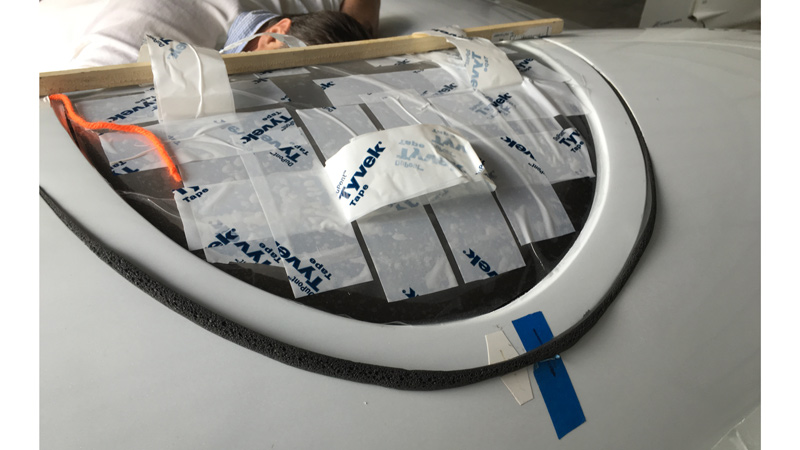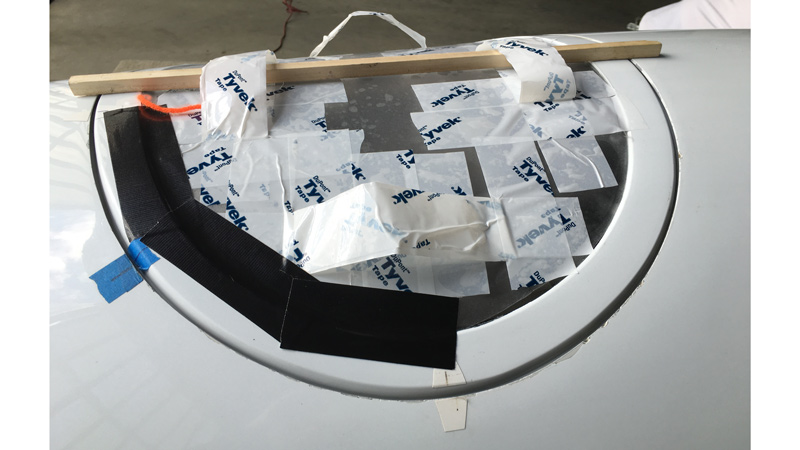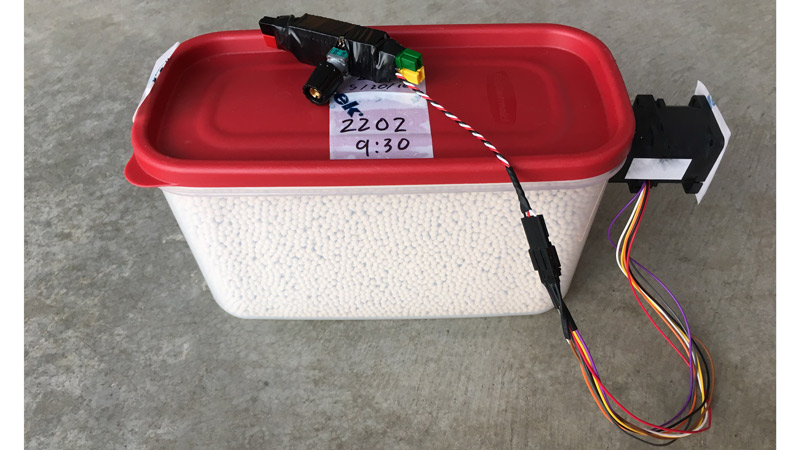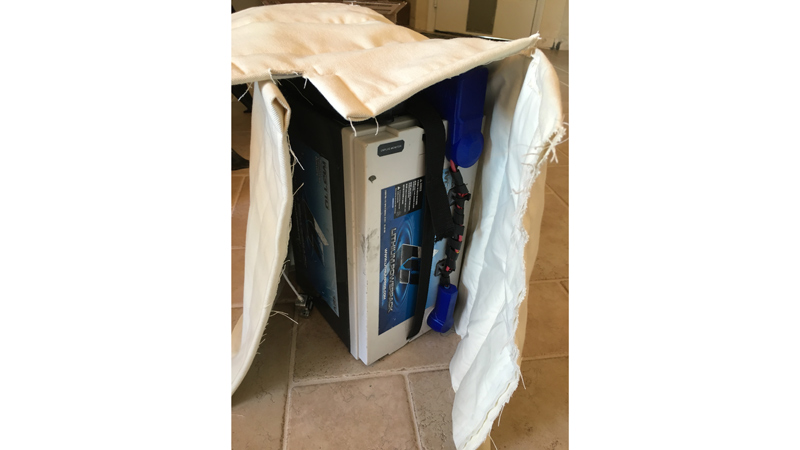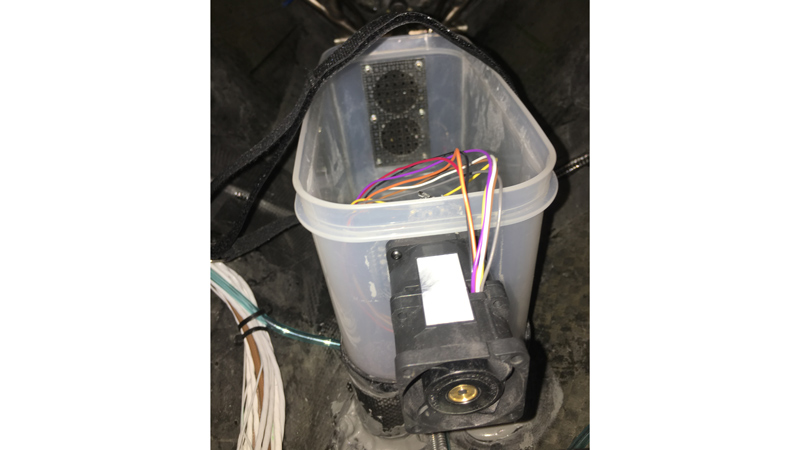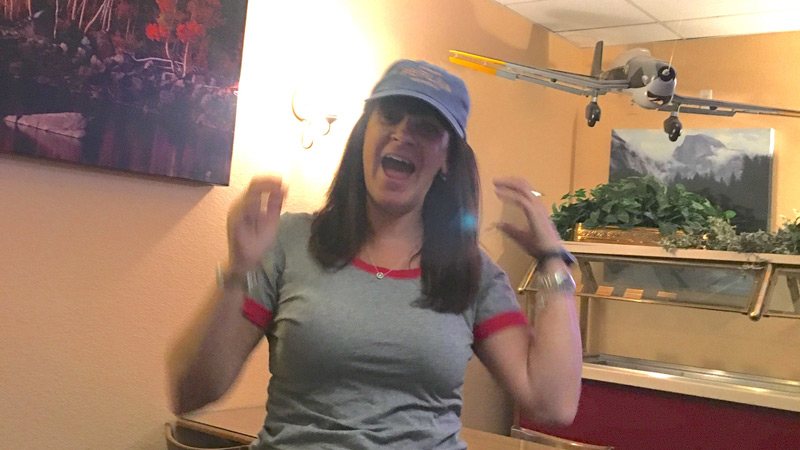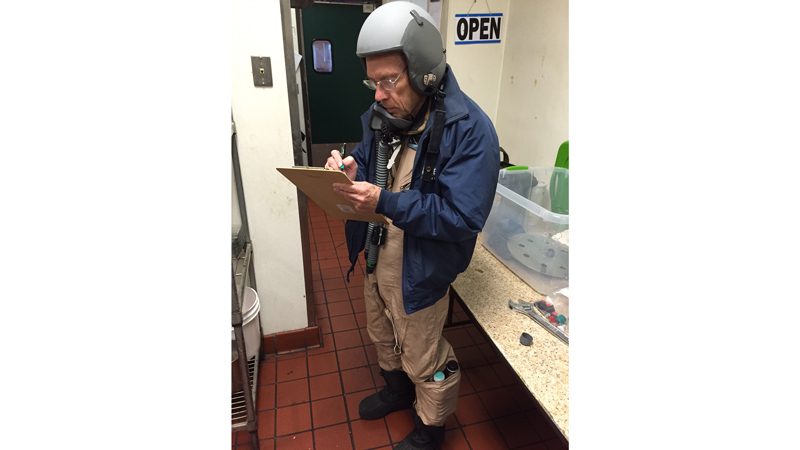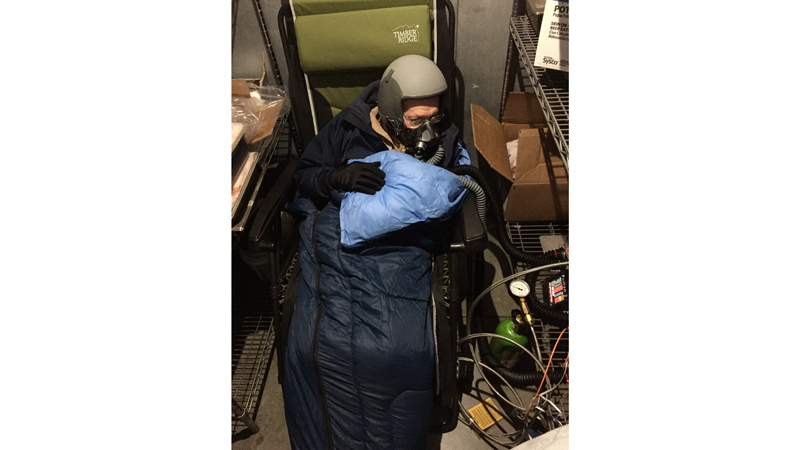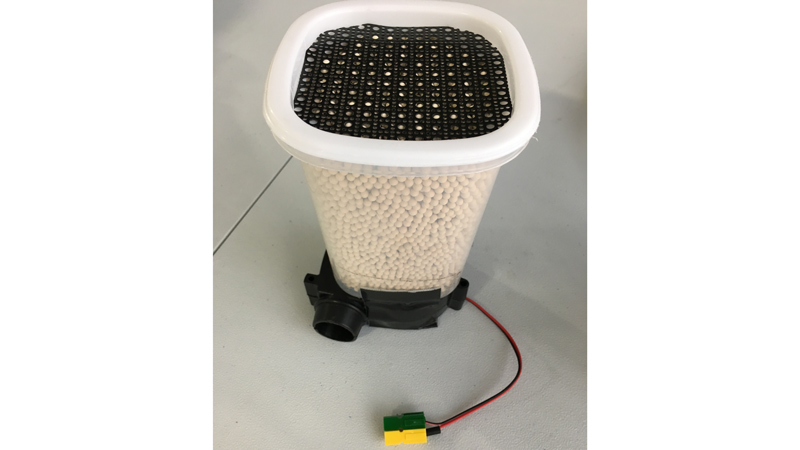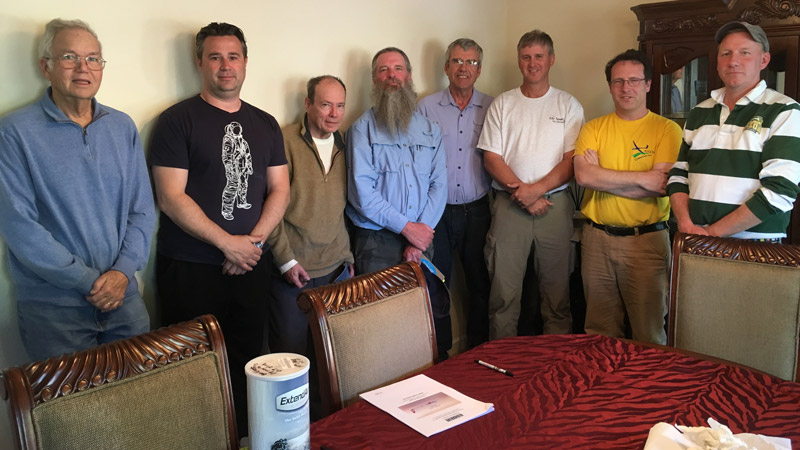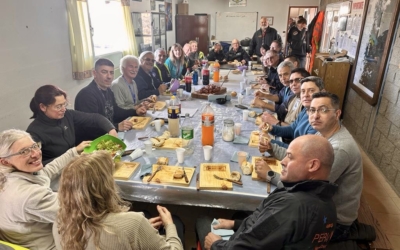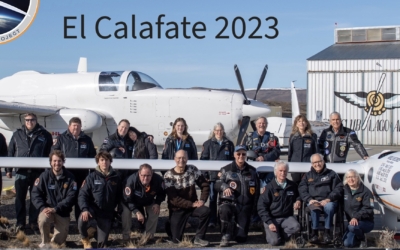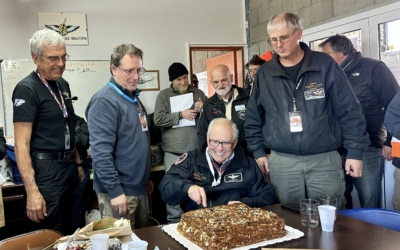Since Minden has had an unusually wave-less Spring, the Perlan Project team has still made progress through ground testing. In temperatures of 60-70 F the cabin became sweltering. (Not so in 45 degrees at dawn.) But we know the tow in El Calafate will be about one hour long. We tried various dessicants in Morgan’s sauna-like bathroom. There was lots of weighing material before and after absorption and calculations. Then they decided they needed double the dessicant and a more powerful fan for cabin circulation. Once happy with the humidity control, Greg fabricated a carbon fiber receptical for the desiccant container.
The battery is not housed inside the pressurized cabin. So a fitted cover needed to be sewn to conserve the limited heat of the battery. Some of the scientific instruments will also benefit from a (slightly) warmer environment.
And a lot of testing has been conducted on the hatch seals by Keith Kongslie. Once he determined a good initial seal material, it was backed up with stronger seal tubing. Due to manufacturing inconsistencies a dual stage pressurization seal was proved optimal. Then they tested as to whether the material sealed better if applied to the fuselage or to the hatch. (Hatch won.) And of course there was testing to our designed differential, and then to a safety factor of 35%.
In much of the ground testing we used the uniquely designed Life Support Systems Display LSSD. Tom, Morgan and Tim all contributed software code with pilot input from Jim and Miguel.
Another ground test was of the BioMarine rebreathers. We wanted to know how they would operate in a cold-soaked environment. Lori Baxter came to Perlan’s rescue with a walk in freezer. Doug Perrenod was the cold-soak volunteer. Eric Greenwell was test conductor. The date was chosen because BioMarine’s Doug Anderson was in Minden to conduct rebreather training for Patagonia ops. Perlan Soars! Jackie

